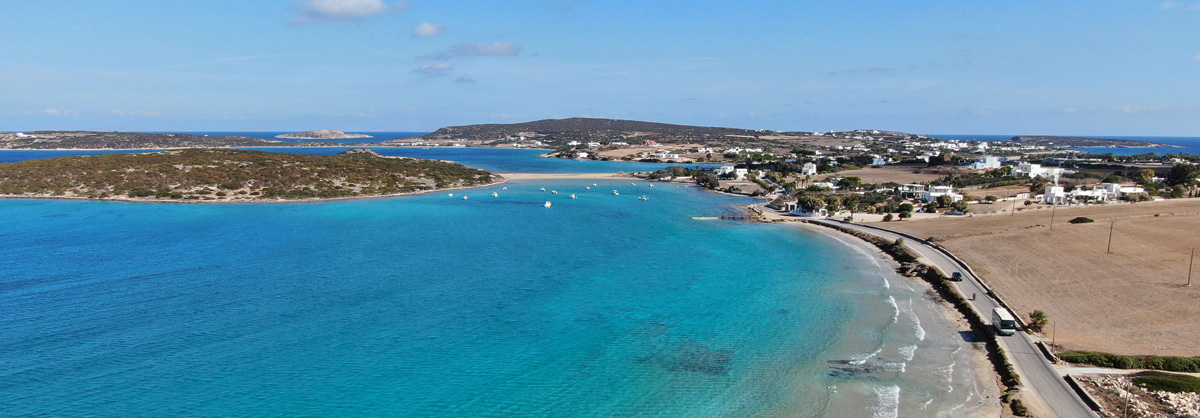
The first inhabitants of the island were the Cycladítes, who established themselves and lived between 3200 and 2100 BC. Then came the Minoans from Crete, who named the island Mínoa or Minoís, and lived from 2100 BC up until 1200 BC. Around 1100 BC., Arkádes from the Peloponnese arrived and installed on the island, renaming it to Páros, after the name of their leader.
Between the 8th and the 5th century BC., the island was occupied by the Ionians. Those years were prosperous for Paros, mainly because of the high quality marble that the islanders mined and exported. That marble was called “lichnítis” and it was renowned at the time for the construction of temples and statues. Some of the most famous statues were made from it, like Aphrodite of Mílos, Hermes of Praxitéli, Níki or Paiónios etc.
During the Hellenic – Persian Wars (499 – 449 BC.), Paros took initially the side of the Persians up until 478 BC, when it joined the Delian Alliance and consecutively the Athenian Hegemony (454 BC.)
During the Roman rule and the Byzantine years, Paros suffered many piratic raids. On top of that, during the 6th and the 7th century AD, there were many earthquakes in the Aegean. As a result from the pirates’ plundering and the natural disasters, the vast majority of the masterpieces were destroyed or stolen.
The piratic raids continued up until the 10th century AD, mainly by Arabs and Germanic tribes, and Paros continued to ruin and the islanders impoverish.
In 1204, Páros comes under the occupation of the Venetians, who rebuild the settlements and construct 3 castles for the defence of the island. Later came the Turks, who completely changed the way the islanders were treated: they impoverished the islanders again with heavy taxes, they killed most of the male population, the younger ones took as oarsmen to their ships and the kids were abducted and send to special military camps, were they were trained to be muslim soldiers (Genítsaroi). As for the women, they were sold in the surrounding slave markets. What a vast difference between the Venetians and the Turks, when treating the indigenous people. That is exactly what our ancestors, the ancient Greeks, meant when they said “if you want to see what kind of a man is the person across to you, give him power”.
Páros was liberated and rose the Hellenic flag in 1830.

Paroikiá (Páros, Chóra or Parkiá): It is built on top of the ancient city. SW of the harbour and at the highest point of the town, the Kástro (1260 AD) is built at the location of the ancient Akrópoli, by materials from the ancient temples and ruins.
It is worth visiting the church of Ekatodapylianí (Katapolianí), which was built in the 4th century AD. According to sources, the name derives from the fact that the church has 99 doors and windows (in Greek, Ekatodapylianí means a hundred gates). The church is one of the most significant Orthodox masterpieces. It was built by the Byzantine Emperor Konstantin the Great, following the request of his mother Saint Eléni, in the image and assimilation of the Agía Sofía temple in Constantinople. There is also a museum in Paroikiá, dedicated to this temple, the Byzantine museum of Ekatodapylianí.


